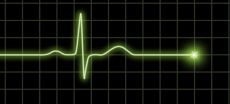
UW Medicine Communications
If you have a cardiac arrest, airports and airplanes appear to be relatively better places for successful resuscitation, mainly due to the proximity of automated external defibrillators (AEDs) and responsive witnesses, new research suggests.
Investigators at the University of Washington School of Medicine reviewed 143 cardiac arrest cases involving travelers at the Seattle-Tacoma International Airport from 2004 to 2019.
Nearly 40% of the 143 people survived the events – much higher than the 10% survival rate seen across all U.S. out-of-hospital cardiac arrests.
“Although we didn’t make that comparison directly in this paper, when you have tools available, the payoff in terms of lives saved was fourfold higher. It shows we have a long ways to go in terms of the 10% survival in other settings,” said Dr. Thomas Rea, an investigator and physician with UW Medicine and King County.
The researchers wanted to understand the incidence, interventions and outcomes of cardiac arrests in the controlled environments of airports and airplanes, said lead researcher Dr. Neal Chatterjee, a cardiologist at the UW School of Medicine.
“Our findings emphasize that cardiac arrest in travelers is survivable and that early resuscitation interventions matter,” Chatterjee said. The paper was published today in the Journal of the American Heart Association.
The study’s starting point was based on the Federal Aviation Administration’s 2004 mandate that AEDs be aboard all commercial jets that cross the United States. These portable machines often can deliver lifesaving shocks if deployed soon after a cardiac arrest.
“AEDs help responders understand the underlying heart rhythm at the time of cardiac arrest. This is one of the critical links in the chain of actions that contribute to patients’ survival,” Chatterjee said. “In our study, all the survivors of an on-plane arrest had an AED applied and shock delivered before EMS (emergency medical services) arrived.”
The 143 cardiac arrests were divided into two groups: on-plane (34) and off-plane (109) events.
Off-plane events were more frequently witnessed (89% to 74%) and more frequently “shockable” (72% vs. 50%) than on-plane events.
Shockable events are those in which the AED determines a shock is potentially useful. But that is also a function of how quickly bystanders recognize the cardiac arrest and apply the AED, Rea noted.
“We chose the airport as an optimal setting,” he said. “The vast majority of the arrests in this study were witnessed – this is the role of the citizen – and over half of those events presented with a shockable rhythm, which means a much better chance of resuscitation.”
Prompt recognition of cardiac arrest was more common off-plane than on-plane, a finding that Chatterjee ascribed to other flyers’ assumptions that the stricken person was simply sleeping.
“In the narrative summaries of on-plane cases, it was common to see phrases such as ‘Patient was last seen well and presumed to be sleeping until it was time to disembark,’” Chatterjee said.
Extrapolating their findings, the researchers estimate 2,000 cardiac arrests globally every year involving air travelers, one-fourth of which occur on-plane.
“Recognizing the presence of an arrest is step one,” he added. “We don’t want to advocate waking up sleeping fliers, but if you have an unresponsive neighbor or witness someone collapse, it’s important to be mindful of what might be going on. Look for an AED and consider CPR.”


